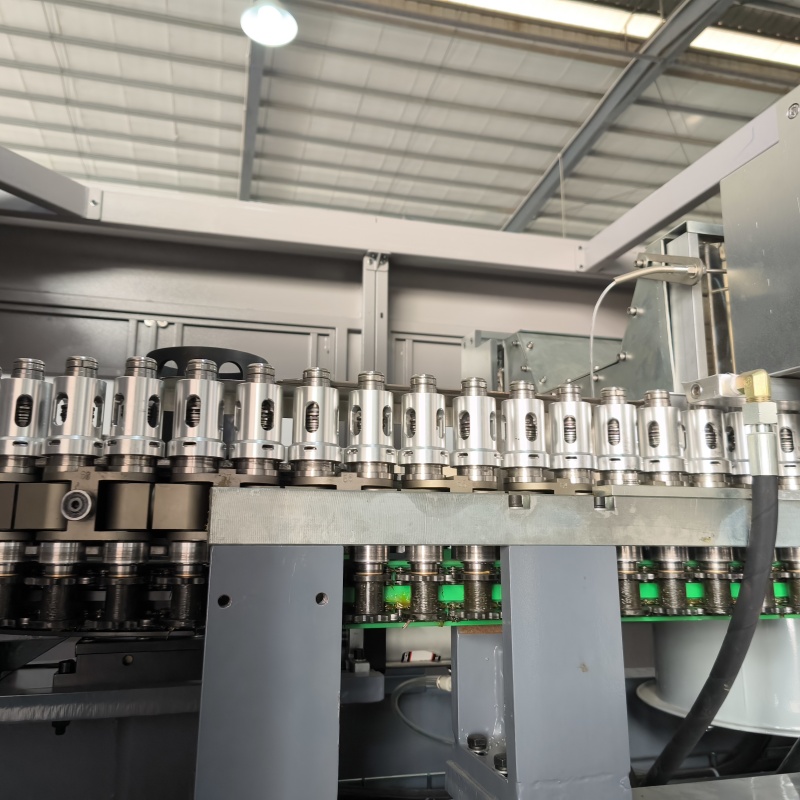IV Infusion Production Lines: Streamlining Essential Medical Supplies
Jul. 16, 2025
IV infusion production lines are essential for the efficient and sterile production of intravenous (IV) solutions, which are crucial for patient care in healthcare facilities. These automated systems streamline the process of filling, sealing, and packaging IV bags, ensuring accuracy, sterility, and high-speed production to meet the demands of hospitals and clinics.
Essential Role in Healthcare Delivery
The importance of IV Infusion Production Lines in the medical and pharmaceutical industries can't be understated. They enable the large-scale production of IV solutions, essential in hospitals, clinics, and countless healthcare facilities worldwide. These lines play a critical role in patient care by guaranteeing the safe and efficient production of IV solutions, ultimately contributing significantly to the healthcare industry's overall functionality.
Key Features of IV Infusion Production Lines
IV Fluid Production Lines boast several key features that enhance their functionality and efficiency. Here's a breakdown of some of the most important ones:
Automated Operations: Minimal human intervention is required due to complete automation. This translates to increased efficiency, reduced errors, and consistent product quality.
High-Speed Production: Designed for high speeds, these lines enable rapid production of IV solutions, meeting the high demand within healthcare facilities.
Advanced Sterilization: Maintaining sterility is paramount. These lines come equipped with advanced techniques like super hot water sterilization, ensuring produced IV solutions are contaminant-free.
Precision Filling: Precise filling is another critical feature. They utilize accurate filling systems to ensure the exact volume of solution is filled into each container.
Quality Control Systems: Most lines incorporate inspection machinery. This ensures the final product meets all quality standards.

Integration and Advanced Technology
A key feature setting IV Infusion Production Lines apart is their integration capability. These systems seamlessly integrate with other equipment in the production facility, such as labeling machines or packaging systems, resulting in a smooth production flow. Additionally, these lines utilize cutting-edge technology like machine learning and AI to enable real-time monitoring, adjustments, predictive maintenance, and data analysis. This not only enhances production efficiency and reliability but also provides valuable insights for continuous improvement.
Benefits of IV Infusion Production Lines
The benefits of utilizing IV Infusion Production Lines in IV solution production are numerous. These benefits contribute to both operational efficiency and product quality, while ensuring safety:
Efficiency and Productivity: Automation significantly reduces manual intervention, leading to faster production times and higher output. This directly translates into increased efficiency and productivity, helping manufacturers meet the high demand for IV solutions.
Consistency and Quality: Automated systems ensure consistent volume and concentration in each IV solution produced. Built-in quality control systems further guarantee that each product meets the required standards. This ensures patients receive high-quality IV solutions.
Safety and Sterility: Advanced sterilization techniques eliminate potential contaminants. This is crucial in maintaining the safety and sterility of IV solutions, directly impacting patient health.
Cost-Effectiveness: Despite the initial investment, these lines can lead to significant cost savings in the long run. High-speed production, minimal waste, and reduced labor costs contribute to the overall cost-effectiveness of these systems.
Flexibility: IV Infusion Production Lines are designed to be flexible and scalable. They can handle a variety of IV solution types and volumes.
Applications of IV Infusion Production Lines
Full automatic IV Infusion Production Lines play a vital role in the medical field, with applications spanning different areas of healthcare:
Medication Administration: Intravenous (IV) therapy is commonly used to administer medications directly into the bloodstream. This method ensures rapid delivery and absorption, making it particularly useful when immediate symptom relief is required.
Fluid and Electrolyte Replacement: IV therapy is crucial for replacing fluids and electrolytes in patients who are dehydrated or unable to take in fluids orally, according to the National Center for Biotechnology Information (NCBI).
Nutritional Support: For patients who are unable to eat or absorb nutrients from food, IV therapy can deliver nutrition directly into the bloodstream. This is especially common in long-term care and post-operative recovery.
Innovative Treatment Methods: Modern IV infusion systems, like the Smart Intravenous Infusion Dosing System mentioned by MDPI, are capable of monitoring and signaling the liquid level in the IV bottle. This advanced application enhances patient safety and treatment efficacy.
65
0
0
All Comments (0)
Previous: How is Smt Assembly Transforming Manufacturing Efficiency?
Next: Unlock Profits: 6 Ton Pyrolysis Plant for Waste Management
If you are interested in sending in a Guest Blogger Submission,welcome to write for us!




Comments